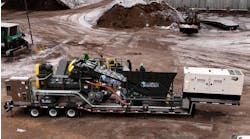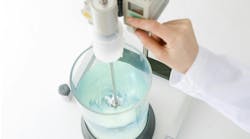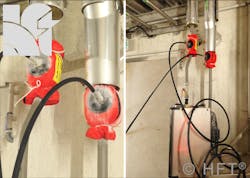Latest from Process Equipment
Advanced Pipe Freezing Technology Reduces Maintenance Costs
The transmission of fluids in pipework plays a crucial role throughout the manufacturing industry—any interruptions can be expensive. They can lead to lost production if sections of pipe need to be restored or if control gear such as valves and monitoring equipment have to be replaced. Often, these requirements involve closing the entire pipe system to drain off and safely dispose of fluids.
The concept of freezing the fluid on either side of a section of pipe for repairs or replacements is a widespread method in domestic and commercial plumbing but is not without complications—it's limited to tubes that are 2 inches (50 millimeters) in diameter.
More recently techniques involving the use of liquid carbon dioxide or nitrogen have now extended the potential to pipes up to 12 inches (300 millimeters) in diameter and beyond.
Carbon Dioxide Freezing
Pipes up to 8 inches (200 millimeters) in diameter are commonly used for transporting liquids in just about every processing industry. Petrochemical manufacturing plants in particular employ highly complex pipework, valves, pumps, and monitoring equipment to control the manufacturing process.
Lubrication and fuel systems on aircraft, marine vessels, and power generating plants as well as beverage and dairy manufacturing are also extensive users of these pipe sizes.
A liquid CO2 technique is the Qwik-Freezer System. A specially designed insulating jacket is wrapped around the pipe at the point where the freeze is required.
When liquid CO2 is injected into the space between the jacket and pipe at a temperature of -108ºF (-78ºC), the pipe contents freeze and a secure “ice plug” is formed, sealing the pipe.
The plug forms only in a section of pipe covered by the jacket so the resulting rise in pressure is very small, eliminating any damage to the pipe.
Liquids in pipes up to 12 inches (300 millimeters) in diameter can be frozen using liquid nitrogen. Of the various products available, the Accu-Freeze System is an example of a world-leading system.
Liquid nitrogen is passed through the copper tubing which is coiled around the pipe at both ends, freezing the area needed.
Alternatively, lightweight metal jackets known as ‘cryo shells’ can be fitted around the area to be frozen.
Advanced temperature-monitoring units are available to control the surface wall temperature of the pipe to accurately and safely create an ice plug.
The Accu-Freeze System is automatic and can be remotely operated, making it ideal for use in locations where engineer access is restricted.
Conclusions
Pipe freezing technology allows fluids to be frozen below using liquid carbon dioxide or nitrogen. Specially designed insulation and feeder hoses are used to deliver coolants. Continuous temperature control during the freeze operation can be incorporated.
The use of freeze technology affords the opportunity to isolate sections of pipework for maintenance, repair, and replacement of valves and instrumentation.
- Saves valuable time
- Avoids complete shutdowns
- Prevents water waste
- Eliminates handling of contaminated water
- Is safe and cost-effective
- Can be controlled from a remote location
- LN2 delivery system is notably colder than other refrigerants
- Standard products to suit pipe and tube sizes up to 12 inches (300 millimeters)
- The freezing temperature can be automatically controlled
- Has an LN2 delivery
Qwik-Freeze Features:
- Saves valuable time
- Avoids complete shutdowns
- Prevents water waste
- Safe and cost-effective
- Standard products to suit pipe and tube sizes from 3/8 to 8 inches (10 to 200 millimeters) in diameter
- Liquid CO2 is inexpensive
- Long freeze length provides a large plug size
- The liquid CO2 delivery system is colder than other refrigerants
- Qwik-Freezer Systems allow operators to source their own CO2 (no expensive refills, replacements or refrigerants)
- No re-calibration is necessary.















